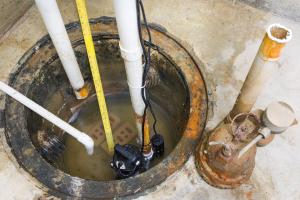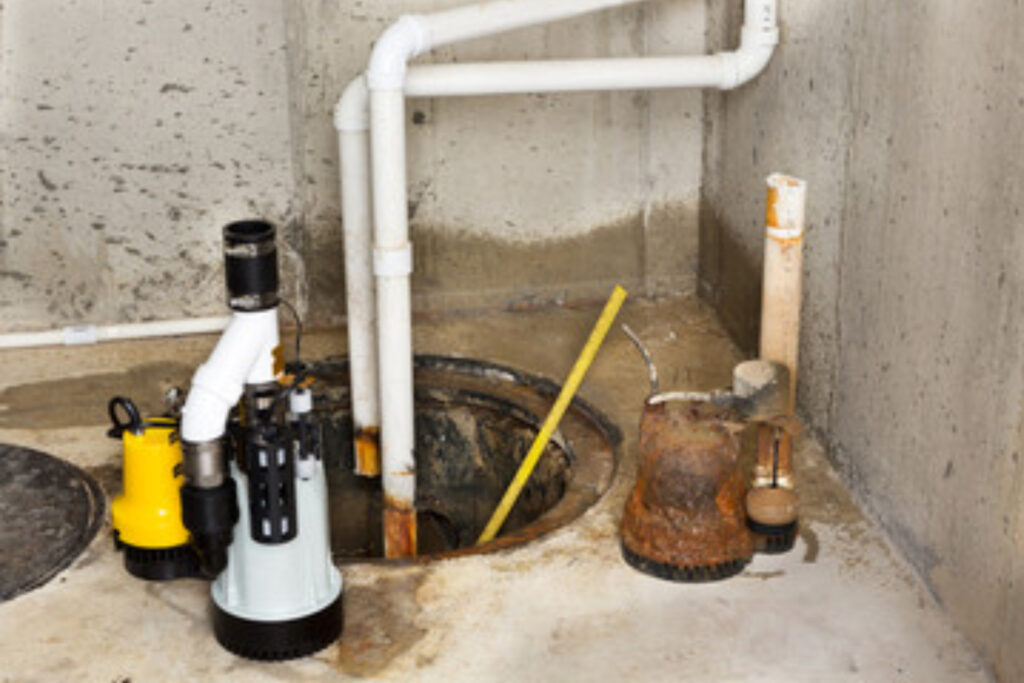Trusted Methods for Servicing a Sump Pump
Trusted Methods for Servicing a Sump Pump
Blog Article
They are making several good points related to Keep Your Sump Pump Clean, It'll Keep You Dry as a whole in the content further down.

Sump pumps are important parts in numerous homes, particularly in locations susceptible to flooding or extreme moisture. They aid stop water damage by successfully getting rid of excess water from basements or crawl spaces. Nevertheless, like any other appliance, sump pumps require normal upkeep to ensure they operate effectively when needed the most. Cleaning your sump pump is an important part of its upkeep, and comprehending how to do it correctly can save you from costly repairs and prospective calamities.
Intro
Preserving a tidy sump pump is crucial for its proper functioning and long life. Overlooking this crucial job can result in clogs, breakdowns, and eventually, water damages to your building. For that reason, learning exactly how to clean a sump pump is vital for home owners who rely upon these devices to keep their basements dry and secured.
Comprehending the Sump Pump
Before diving right into the cleansing process, it's vital to have a standard understanding of just how a sump pump works. Normally installed in a pit or container below the basement floor, a sump pump contains several essential components, consisting of a pump, a float switch, and a discharge pipe. When water builds up in the pit, the float button triggers the pump, which after that pumps the water out through the discharge pipeline, far from the structure's structure.
Indications of a Dirty Sump Pump
Recognizing when your sump pump needs cleansing is crucial for stopping potential breakdowns. Some common indicators that indicate a dirty sump pump consist of strange sounds during procedure, lowered water circulation, and visible particles in the pit. If you observe any one of these signs, it's necessary to cleanse your sump pump without delay to avoid any kind of more concerns.
Getting ready for Cleansing
Before you start cleansing your sump pump, it's important to take some security precautions. Begin by turning off the power to the pump to avoid any type of electrical mishaps. Furthermore, wear proper safety equipment, such as gloves and goggles, to safeguard yourself from dust, particles, and possible microorganisms.
Step-by-step Guide to Cleaning Up a Sump Pump
Turning off the Power
Begin by detaching the power supply to the sump pump to avoid any accidents while cleaning.
Getting Rid Of Debris and Dust
Make use of a pail or a scoop to get rid of any kind of visible particles, dust, or sediment from the sump pit. Dispose of the debris appropriately to prevent it from clogging the pump or the discharge pipeline.
Cleaning up the Pump and Float Switch Over
Once the pit is free from debris, carefully get rid of the pump from the pit. Inspect the pump and the float switch for any type of indicators of damages or wear. Use a soft brush or cloth to cleanse the surface areas and eliminate any type of collected gunk.
Flushing the System
After cleaning up the pump and float button, purge the sump pit with clean water to remove any type of continuing to be dust or debris. This will certainly aid guarantee that the pump operates smoothly and successfully.
Looking For Proper Functioning
Before reinstalling the pump, perform a quick examination to make sure that the float button turns on the pump appropriately. Put some water into the sump pit and observe the pump's operation. If everything is working appropriately, you can reassemble the pump and reconnect the power supply.
Maintenance Tips to Maintain Your Sump Pump Clean
In addition to periodic cleansing, there are a number of maintenance pointers you can comply with to keep your sump pump in optimal problem:
Verdict
Cleansing your sump pump is a crucial element of its maintenance and guarantees that it runs successfully when you require it one of the most. By adhering to the steps described in this guide and including routine upkeep right into your routine, you can expand the life expectancy of your sump pump and safeguard your home from water damages.
6 STEPS ON HOW TO CLEAN A SUMP PUMP PROPERLY
UNDERSTANDING SUMP PUMPS
Your sump pump plays a crucial role in protecting your home by managing and removing excess water. It primarily functions as a “shield”, guarding your basement against the damaging effects of water accumulation. The pump is housed in a sump pit in the lowest part of your basement, and its job is to pump out any water that collects there.
During heavy rainfalls or when snow melts rapidly, water can infiltrate your basement, posing potential risks like flooding, structural damage, and harmful mold growth. Here, the sump pump springs into action, pumping out the intruding water and directing it away from your home.
SAFETY FIRST
Before cleaning, remember to prioritize safety. Disconnect the sump pump from the power source to prevent any accidental electric shocks. Also, wear sturdy gloves to protect your hands from any sharp or dirty components within the pump.
REMOVE THE SUMP PUMP
After ensuring your safety, the next step is to remove the sump pump from its pit. Doing this might require careful maneuvering as you don’t want to damage any pump components. Once removed, clean the sump pit to remove any accumulated debris or sludge.
INSPECT THE PUMP
Inspect the pump for any visible signs of wear or damage. Check the power cord, float switch, and impeller housing. If any components look worn out or damaged, consider replacing them to ensure optimal performance.
CLEAN THE PUMP
Thoroughly clean the pump with warm, soapy water. Make sure to rid it of any dirt, gravel, or other debris that might impede its performance. You can use a toothbrush to clean the small, hard-to-reach parts of the pump.
REINSTALL THE SUMP PUMP
Reinstall the pump into the sump pit Make sure it’s positioned correctly to remove the water effectively Once it’s back in place, reconnect it to the power source TEST THE PUMP
Finally, pour some water into the pit to ensure the pump works correctly. It should start automatically and begin pumping out the water; if it doesn’t, check the power source and the positioning of the pump.
Remember, while cleaning your sump pump is an essential part of home maintenance, hiring a professional plumber for a thorough inspection and cleaning at least once a year is also important. This will ensure that your pump is in optimal condition, ready to protect your home from potential water damage.
BEST PRACTICES FOR CLEANING SUMP PUMP DISCHARGE PIPES
Regular Inspection: Regularly inspect your discharge pipes, especially during heavy rainfall or snowmelt periods. Look for any signs of blockage or damage. Early detection of problems can prevent serious issues down the line. Periodic Cleaning: Over time, sediment and debris can accumulate in the discharge pipes, impeding the flow of water. Regular cleaning helps keep the pipes clear and functioning efficiently. You can use a high-pressure water jet to effectively clean the pipes. Insulation During Winter: In colder climates, discharge pipes can freeze, blocking the outflow of water. Protect your discharge pipes from freezing temperatures by insulating them with foam pipe insulation. This will ensure the sump pump can continue to discharge water even in freezing conditions. Proper Positioning: The discharge pipe should be positioned to direct water away from your home’s foundation. Improper positioning can lead to water seeping back into the basement. Ensure the pipe is long enough and angled correctly. Installation of a Check Valve: A check valve prevents water from flowing back into your sump pit after the pump has pushed it out. Installing a check valve helps maintain the efficiency of your sump pump and reduces the risk of flooding. Minimize Pipe Turns: Every curve or turn in the discharge pipe can decrease the efficiency of water flow. By minimizing turns and bends in your discharge pipe, you can increase the efficiency of your sump pump. https://www.fullspeedplumbing.com/how-to-clean-a-sump-pump-properly9999/

As an avid person who reads on How To Effectively Clean A Sump Pump, I was thinking sharing that piece of content was a good idea. Do you know about another individual who is sincerely interested in the topic? Do not hesitate to promote it. I praise you for your time. Don't hesitate to come by our website back soon.
Call Today Report this page